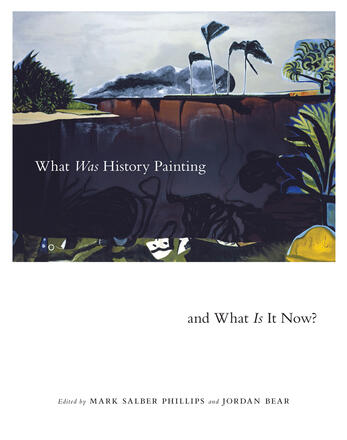
What Was History Painting and What Is It Now?
How the most prestigious genre of painting collapsed into obscurity, only to rise again in new guises.
Description
The dominant visual language of European painting from the Renaissance to the nineteenth century, history paintings were formidable in their monumental scale, ambitious moral lessons, and intricate narratives. With the rise of modernist avant-gardes, the genre receded from the forefront of artistic production into the realm of nostalgia. Yet history painting cast a shadow that would subtly colour even the works that sought to displace it. Exploring the resilience of this distinctive mode of visual representation, What Was History Painting and What Is It Now? brings together an internationally distinguished group of scholars to trace the endurance, adaptation, and mutation of history painting. These studies offer a reexamination of the fortunes of the genre from North America to Europe and Africa. Organized around illuminating themes, the book explores the creation of an audience attuned to the genre's didactic aims, the entry of history painting into the marketplace of commercial art and attractions, and the reimagination of the mode in response to the edicts of modern and contemporary art. Spanning the full range and diversity of history painting, this collection is a broad reconsideration of the tradition and the vibrant ways in which it resonates through the art of the present.
Reviews
"This coherent and well-integrated collective work is the result of a brilliant idea, that of rejecting a simple definition of history painting and a simple story of the decline of a genre, accepting rival definitions and replacing 'decline' with 'change.' It breaks new ground and should inspire further research." Peter Burke, Emmanuel College, University of Cambridge, and author of Popular Culture in Early Modern Europe
"The case study format functions as an effective litmus test, prompting the reader, as Phillips and Bear do in their respective introductions, to consider other works of art while grappling with the idea of history painting as a heuristic. Other media slide naturally into this space, as many of the contributors show. The result intelligently complicates history painting, both neutralizing the authorial grip of the theoretical paradigm while also enhancing the nuance of the work under scrutiny. ... the idea of permanence is rigorously explored vis-à-vis the works of art, especially in terms of the medium. Here, as in the book, is a good place to end: the multi-media, and multi-sensory, work of eco-artists Rúrí, Mariele Neudecker, Katie Paterson, and Isabelle Hayeur pick up on the most efficacious feature of history painting for our time: a call to action." RACAR
"In tracing the ways in which artists utilized the mechanics of the genre outside of the constraints set by the European academies, this volume may serve world historians in finding creative ways to decode the visual structures of history painting as they served not only to support, but to critique or subvert ideologies and artistic concepts." Journal of World History
"One of the most engaging and provocative collections of essays that I've read in some time." Douglas Fordham, University of Virginia